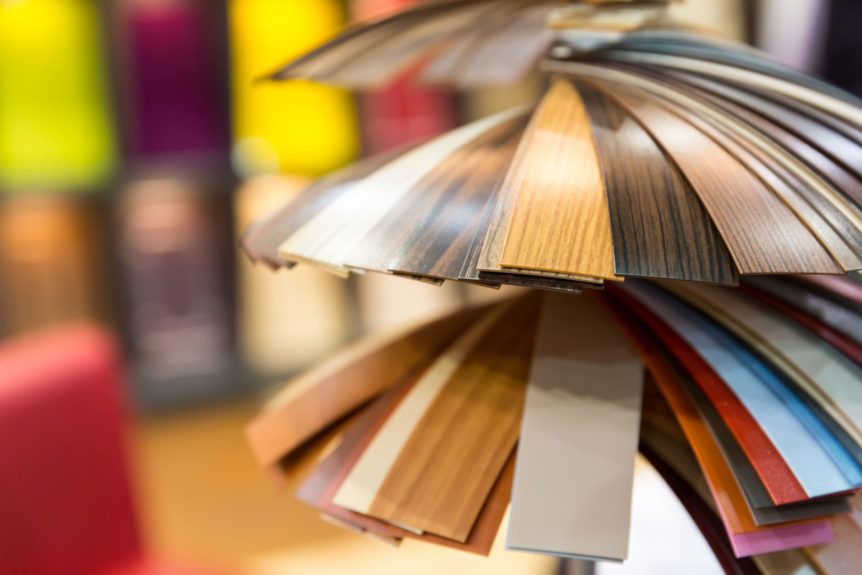
Linoleum vs Vinyl: Which is Best for Your Home?
We’ve posted about several various floor types in the past, but one we’ve not mentioned often has been linoleum. Linoleum may not be as trendy these days, but it’s still a viable option when it comes to flowing. Often mistaken for vinyl due to their similarities, linoleum is actually quite different. However, both are very resilient, so it’s important when choosing the best flooring option for your home or business to consider the differences and similarities of both options before making your final choice.
Materials Used
Vinyl is a manufactured, manmade product produced with petroleum, which is a non-renewable resource. A large part of vinyl’s chemical makeup is chlorine, which requires a lot of energy to extract and process.
Linoleum is mostly made of linseed oil, which is a naturally occurring substance that comes from flax seeds. It’s then mixed with other natural and renewable materials, such as cork dust, wood flour, and rosin.
Verdict: For those who may be more environmentally conscious, linoleum may be the right option for you.
Installation Process
Vinyl is incredibly easy to install; in fact, many people can install it themselves these days with the growing popularity of vinyl peel-and-stick tiles and snap-in planks. Sheet vinyl usually requires a professional, however, as it requires exact measurements and precise cutting.
While installing linoleum can be very similar to installing vinyl, sheet linoleum is much harder to work with than the sheet variety of vinyl. However, linoleum also comes in easy-to-install tiles and planks just as vinyl does.
Verdict: This one’s a tie!
Water-Resistance
Almost all types of vinyl are practically waterproof. Homeowners often install vinyl in basements and bathrooms. Of course, because it has fewer seams, sheet vinyl is the most water-resistant type of vinyl.
Linoleum, while technically considered to be water-resistant, is not immune to water damage. It needs to be resealed from time to time in order to protect it. Flooding and humidity can also lead to damage that includes curling and may even require entire sheets to be replaced.
Verdict: If you live in an excessively humid area or flooding zone, vinyl is the way to go. If you want hard-surface flooring in your basement, vinyl is the way to go. If you want to install your floors and then basically forget about them, vinyl is probably the route you want to take.
Cost and Life Expectancy
Vinyl costs anywhere from $0.50 to $2 per square foot for standard grades, whereas higher-end vinyl can cost $5 per square foot or more. Vinyl has a life expectancy of 10 to 20 years. However, it will remain looking glossy until its “wear layer” fades, which inevitably leads to its degradation.
Linoleum costs $2.00–$5.00 per square foot. However, it can last anywhere from 20 to 40 years or more. On the other hand, it also shows its age over time as it becomes weathered and can begin to look increasingly “old” until finally needing replaced.
Verdict: Indeterminate. This one really depends on a person’s budget and wants.
Design Options
With printed vinyl, you can choose almost any color, pattern, or image you want embedded directly into the surface of the material, creating some of the most vibrant and realistic effects of any flooring option out there! However, vinyl is only as strong as the wear layer that lays over this print. As mentioned previously, this layer wears down over time.
Linoleum is colorfast, which means that the patterns and hues are not just printed on the surface, but are dimensionally present through the entire piece. This limits the design options to some degree but allows the flooring to wear down without fading, as the colors are true all the way through the material.
Verdict: Vinyl…but only just! It has more style options and will still have a decent life expectancy before the wear layer starts to go. (But let’s be real: you can’t beat 40 years of no fading!)
Cleaning and Care
Vinyl is probably the easiest floor to keep clean. You can sweep and vacuum vinyl regularly, or mop it with any of a variety of detergents without having to worry about the material discoloring. It’s also resistant to moisture, mold, and mildew. You can simply wipe it clean every now and then to keep it looking nice, and you’re done.
Linoleum is almost as low maintenance as vinyl, and as a result has been the long running favorite of schools, hospitals, and other public properties for decades. Sweeping and mopping ios really all it takes to keep clean, and while it can stain, most stains can be cleaned by hand using a rag and mild detergent.
Verdict: If you’re looking for a true low-maintenance flooring option, vinyl wins again.
The Winner
Overall Verdict: While both flooring options are great choices, and both are very similar, at the end of the day vinyl wins by a smidge. But as always, determine your options and what route is best for you and your home or business needs! Both are great, low-maintenance flooring types.




